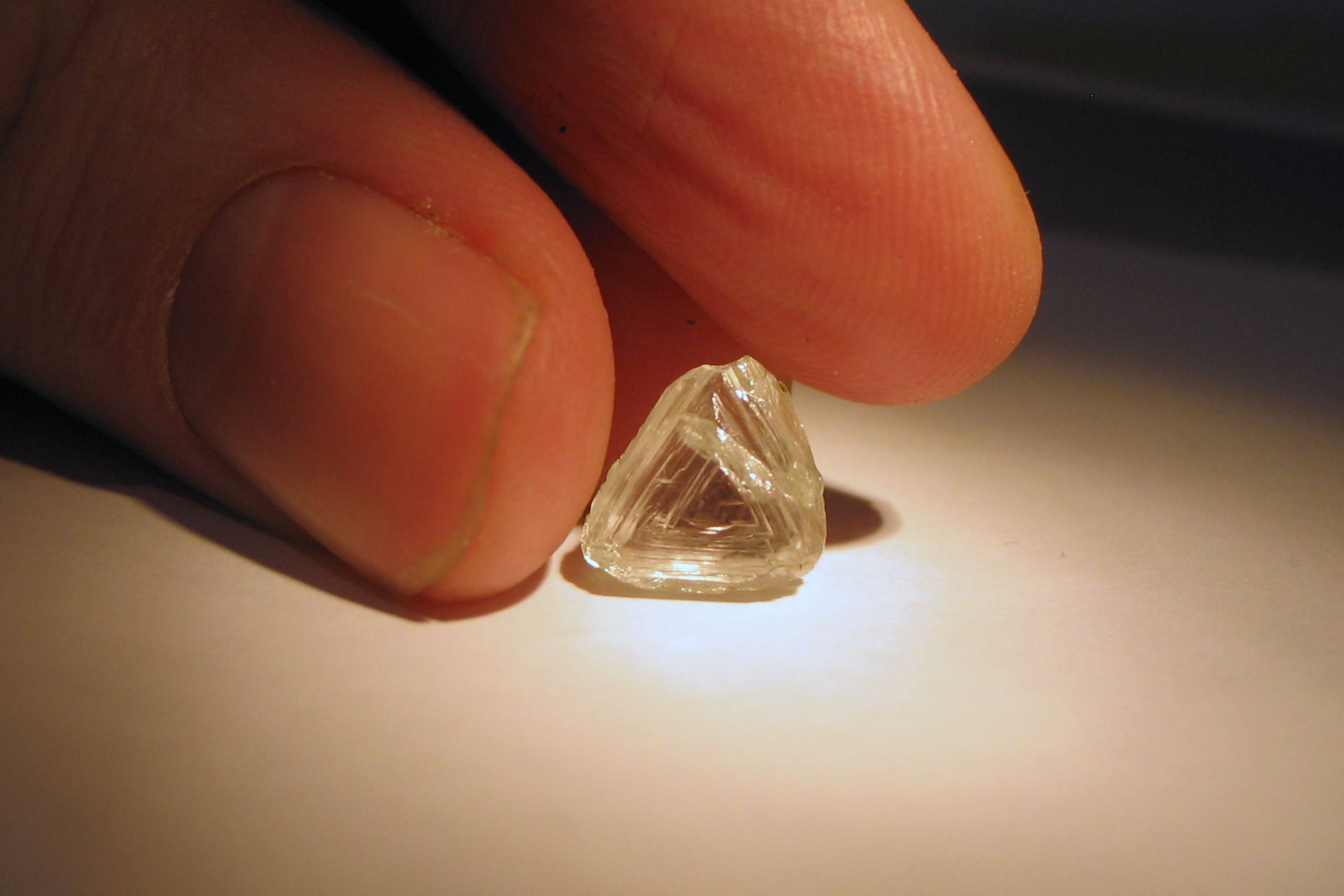Scientists unravel mystery which could lead to future diamond finds
Researchers think they understand the conditions which see the precious stones erupt to the Earth’s surface from far below where they are formed.

Scientists believe they have solved the puzzle of why diamonds “erupt” in the Earth’s surface paving the way for future discoveries of the prized jewel.
The team of researchers, led by the University of Southampton, have discovered that the breakup of tectonic plates is the main driving force for the generation and eruption of diamond-rich magmas from deep inside the Earth.
Diamonds are hundreds of millions or even billions years old and are formed under great pressure.
They are typically found in a type of volcanic rock known as kimberlite which is found in the oldest, thickest, strongest parts of continents such as in South Africa, which was the site of the diamond rush of the late 19th century.
But scientists have been baffled as to how they reached the Earth’s surface until this latest study which is published in the journal Nature.
Dr Tom Gernon, associate professor of Earth science at the University of Southampton and lead author of the study, said: “The pattern of diamond eruptions is cyclical, mimicking the rhythm of the supercontinents, which assemble and break up in a repeated pattern over time.
“But previously we didn’t know what process causes diamonds to suddenly erupt, having spent millions or billions of years stashed away 150 kilometres (93 miles) beneath the Earth’s surface.”
The new research examined the effects of global tectonic forces on these volcanic eruptions spanning the last billion years.
The team, which included researchers from the universities of Birmingham, Leeds, Potsdam, Portland State, Macquarie, Florence, and Queen’s in Ontario, used statistical analysis, including machine learning, to examine the link between continental break-up and kimberlite formations.
The results showed that eruptions of most kimberlite volcanoes occurred 20 to 30 million years after the tectonic breakup of Earth’s continents.
Dr Thea Hincks, senior research fellow at Southampton, said: “Using geospatial analysis, we found that kimberlite eruptions tend to gradually migrate from the continental edges to the interiors over time at rates that are consistent across the continents.”
They then found that the Earth’s mantle: the convecting layer between the crust and core – was disrupted by rifting (or stretching) of the crust, even thousands of kilometres away.
Dr Stephen Jones, associate professor in Earth systems at Birmingham, and study co-author said: “We found that a domino effect can explain how continental break-up leads to formation of kimberlite magma.
“During rifting, a small patch of the continental root is disrupted and sinks into the mantle below, triggering a chain of similar flow patterns beneath the nearby continent.”
Dr Sascha Brune, head of the geodynamic modelling section at GFZ Potsdam, and a co-author on the study, ran simulations to investigate how this process unfolds.
He said: “While sweeping along the continental root, these disruptive flows remove a substantial amount of rock, tens of kilometres thick, from the base of the continental plate.”
Dr Gernon explained that this process led to the conditions needed for the creation of diamond-producing kimberlites.
He said: “Remarkably, this process brings together the necessary ingredients in the right amounts to trigger just enough melting to generate kimberlites.”
The scientists say that this understanding of this kimberlite migration helps them understand the locations and timings of past volcanic eruptions and therefore the insight into locating potential diamond deposits.
Bookmark popover
Removed from bookmarks